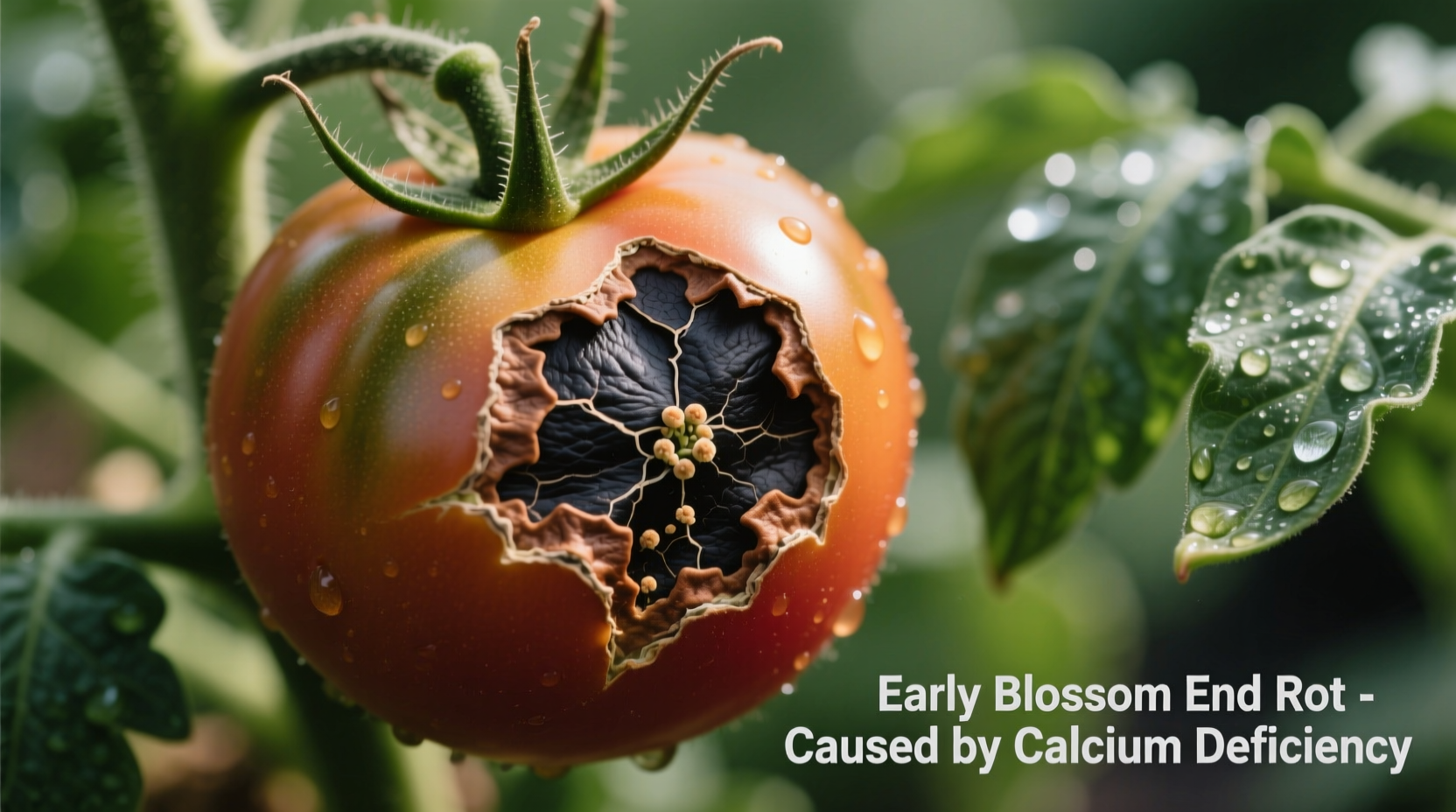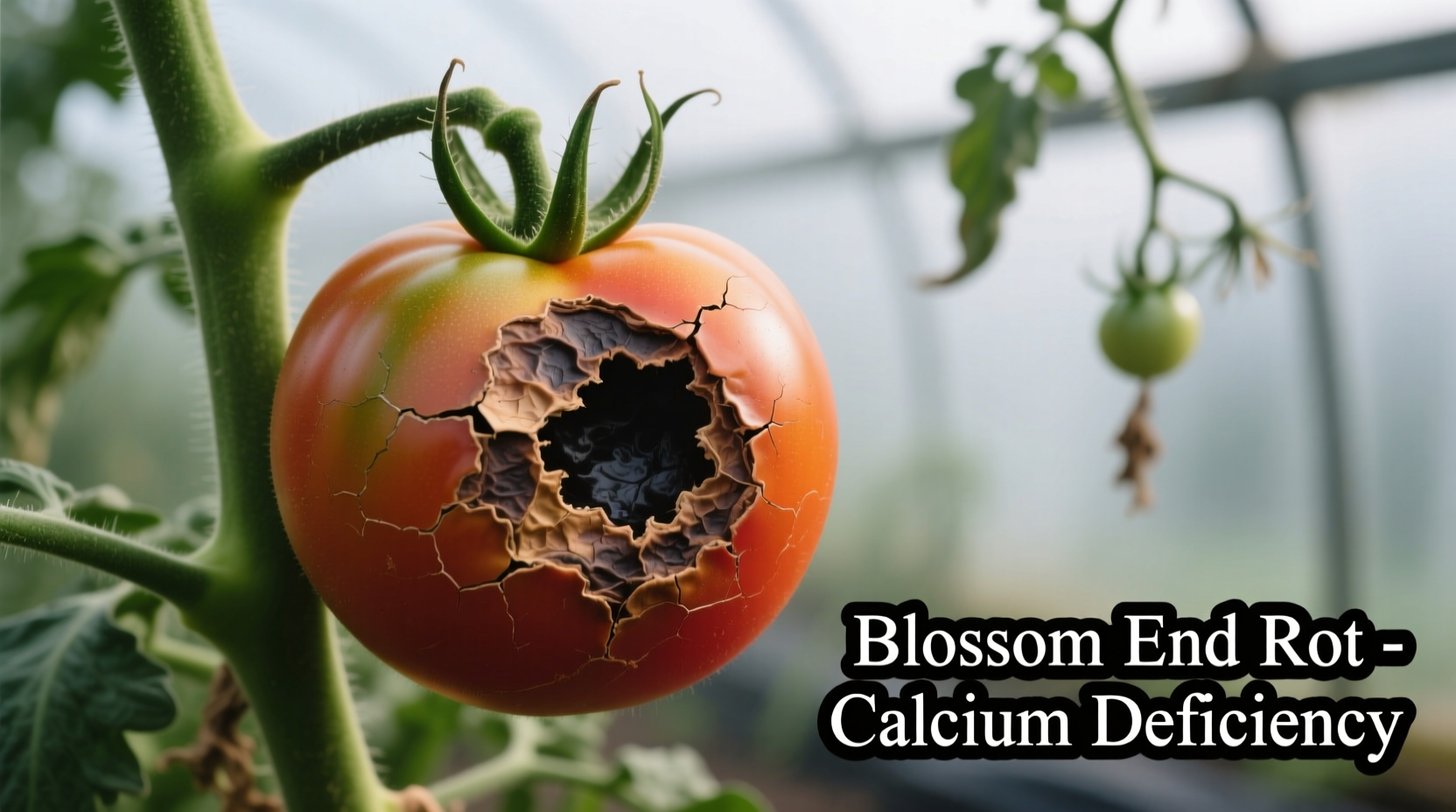Understanding Blossom End Rot: More Than Just a Calcium Problem
When you spot those telltale dark, leathery patches developing on the bottom of your tomatoes, you're facing blossom end rot (BER). This common gardening challenge affects up to 50% of homegrown tomatoes in some regions during dry seasons, according to agricultural extension data from University of Minnesota Extension. While often mistaken for a disease, BER is actually a physiological disorder caused by calcium imbalance in developing fruit.

How to Identify Blossom End Rot Correctly
Before treating, confirm you're dealing with true blossom end rot and not another tomato issue. BER appears as:
- Water-soaked spots on the blossom end (bottom) of fruit
- Lesions that expand and turn dark brown or black
- A dry, sunken, leathery texture (not mushy like fungal diseases)
- Primarily affects first fruits of the season
| Condition | Appearance | Spread Pattern | Solution Approach |
|---|---|---|---|
| Blossom End Rot | Dark, sunken bottom spots | Affects individual fruits, not contagious | Soil moisture management |
| Anthracnose | Circular, sunken spots with concentric rings | Spreads between fruits | Fungicide treatment |
| Early Blight | Target-like spots on leaves first | Spreads upward from soil | Foliar fungicide |
Why Calcium Isn't Always the Real Culprit
Though BER stems from insufficient calcium in developing fruit, the soil often contains adequate calcium. The problem usually lies in calcium transport. Calcium moves through plants via water flow, so inconsistent watering disrupts this process. During dry periods followed by heavy watering, plants can't deliver calcium efficiently to developing fruits.
Additional factors contributing to blossom end rot include:
- Fluctuating soil moisture - The primary cause in most home gardens
- Root damage from cultivation or pests
- Excessive nitrogen that promotes rapid growth
- Soil pH imbalances (below 6.0 or above 7.5)
- High salt concentrations in soil
Proven Prevention Strategies That Actually Work
Preventing blossom end rot requires consistent management practices throughout the growing season:
Water Management Techniques
Maintain consistent soil moisture—this is more critical than adding calcium supplements. Implement these watering practices:
- Water deeply 1-2 times weekly rather than frequent shallow watering
- Use drip irrigation or soaker hoses to maintain steady moisture
- Apply 2-3 inches of organic mulch to regulate soil moisture
- Check soil moisture daily during fruit set (top 6 inches should feel moist)
Soil Preparation for Calcium Availability
Before planting, prepare your soil properly:
- Test soil pH and amend to 6.5-6.8 for optimal calcium uptake
- Incorporate garden lime (calcium carbonate) if pH is low
- Add gypsum (calcium sulfate) if soil pH is already adequate
- Mix in compost to improve soil structure and moisture retention
Cultural Practices That Reduce Risk
Additional techniques that minimize blossom end rot occurrence:
- Avoid high-nitrogen fertilizers during fruit development
- Choose BER-resistant varieties like 'Mountain Pride' or 'Defiant PHR'
- Don't cultivate soil deeply around established plants
- Provide afternoon shade in extremely hot climates
Can You Treat Existing Blossom End Rot?
Once symptoms appear, focus on preventing further damage rather than curing affected fruit. Remove severely affected tomatoes to redirect plant energy. While calcium sprays are commonly recommended, research from Oregon State University Extension shows limited effectiveness since calcium doesn't move well within plant tissue.
Instead, prioritize these immediate actions:
- Establish consistent watering schedule immediately
- Check soil moisture daily for next 2 weeks
- Reduce nitrogen fertilization
- Apply mulch if not already done
- Monitor new fruit development closely
Are Affected Tomatoes Safe to Eat?
Yes, tomatoes with blossom end rot are safe to eat after removing the affected portion. Simply cut away the dark, sunken area and use the remaining healthy fruit. The disorder affects only the physical structure of the fruit, not its chemical composition. According to food safety guidelines from University of Illinois Extension, BER doesn't introduce pathogens or toxins into the fruit.
Common Misconceptions About Blossom End Rot
Several myths persist about this condition that lead gardeners down unhelpful paths:
- Myth: Adding crushed eggshells directly to planting holes prevents BER
Reality: Eggshells decompose too slowly to provide timely calcium - Myth: Blossom end rot is contagious between plants
Reality: It's a physiological disorder, not a disease that spreads - Myth: More calcium fertilizer always solves the problem
Reality: Excess calcium can create nutrient imbalances
When to Worry: BER as a Symptom of Larger Issues
While blossom end rot typically affects only 10-20% of fruit in a healthy plant, widespread BER (affecting more than half your crop) may indicate deeper problems:
- Persistent drought conditions requiring irrigation system upgrade
- Severe root system damage from pests or disease
- Chronic soil pH imbalance needing professional correction
- Contaminated soil with high salt content
If BER affects most of your crop despite proper watering, consider getting a professional soil test from your local extension service to identify underlying issues.











 浙公网安备
33010002000092号
浙公网安备
33010002000092号 浙B2-20120091-4
浙B2-20120091-4